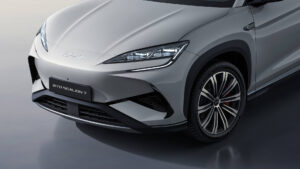The importance of branding cannot be understated. A logo, for example, acts as the face for the inner workings of a business, from its operation to its values. If you’re looking for ways to create a credible brand, a logo that your customers will recognise is critical.
To understand what makes a brand logo recognisable, we have deconstructed the methodology behind three international brands: Apple, McDonald’s, and Amazon. Each of these brands utilises different design techniques that your business can adopt.
Minimalism and the Apple logo
The Apple logo is instantly recognisable – but how is this design enough to capture the attention of audiences across the world? The answer is straightforward; a simple design is often the most effective. Here are some reasons why.
First of all, Apple’s logo is a great example of symbolic representation. The image itself is a literal depiction of the brand’s name, a strategy shared by other noteworthy brands, such as Shell and Penguin. This means that the branding is accessible for customers internationally, making it effective for global use on name badges and other methods of employee identification.
The iconic Apple logo is also designed to be minimalist. In the past, the logo has been metallic (2007-2015), translucent (1998), and even rainbow-coloured (1977-1998). Now, customers have come to recognise Apple’s logo as monochromatic and two-dimensional.
Inspired by Swiss Style, this two-dimensional design is a perfect example of flat logo design. This is the opposite of a realistic or three-dimensional design, otherwise known as skeuomorphism. Apple has become known for its minimalist design and they’re certain to make use of it for years to come.
Colour psychology and the McDonald’s logo
The McDonald’s logo is recognisable around the globe. It doesn’t matter where you are in the world, the iconic golden arches are enough to make anybody crave a few fries. In addition to designing a logo that resembles its popular potato-based food, McDonald’s use of colour is particularly effective.
To understand the success of the McDonald’s logo, we can explore the importance of colour psychology. This theory argues that colours can make people feel a certain way, thereby affecting consumer trends and habits.
The logo consists of two colours: yellow and red. The yellow – which is seen in the golden arches – evokes feelings of happiness. This encourages customers to form positive associations with the brand. In comparison, red is used as the backdrop of the logo. This is a bold colour that can actually be used to instil hunger in the customer. Clever, don’t you think?
Hidden meaning and the Amazon logo
Finally, Amazon is another brand with an iconic logo. The design contains the name of the brand itself, which means that people will be able to instantly realise its origin. A curved orange arrow also sits below the text.
The success of this logo can be accredited to a hidden meaning. The arrow – while resembling a smile – actually points from ‘a’ and ‘z’ in the brand name. It’s a subtle message, but it can imply to customers that Amazon can fulfil all of their wishes from start to finish.
This logo is also easily modified. Amazon has adapted their recognisable branding to suit its varying ventures, tailoring the design for the logos of Amazon Prime and Amazon Music. The meaningful arrow continues to make an appearance throughout these designs, further solidifying Amazon’s familiarity across customers’ experiences with the brand.
Branding trends are constantly changing. These logos are effective, but they may evolve over time to resemble something completely different. However, by understanding what makes these examples work so well, you can go on to create a successful logo for your business. Which element will you include?













